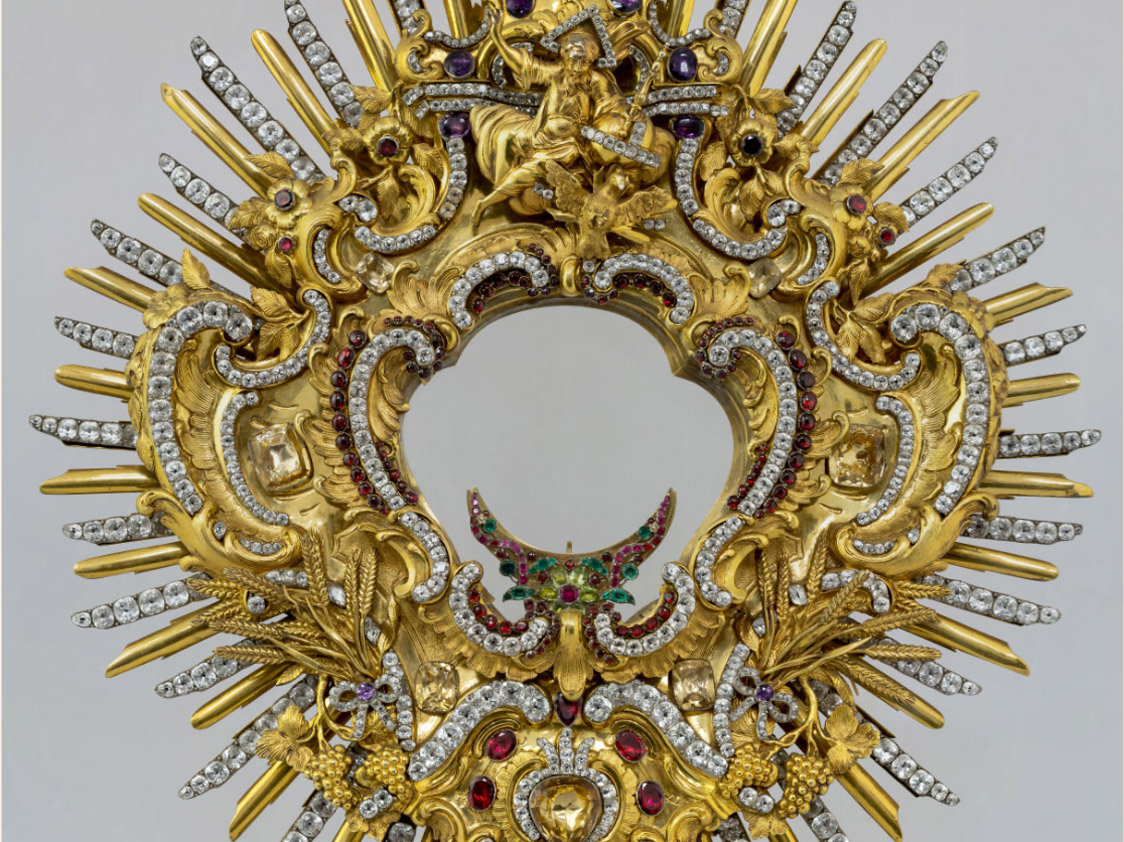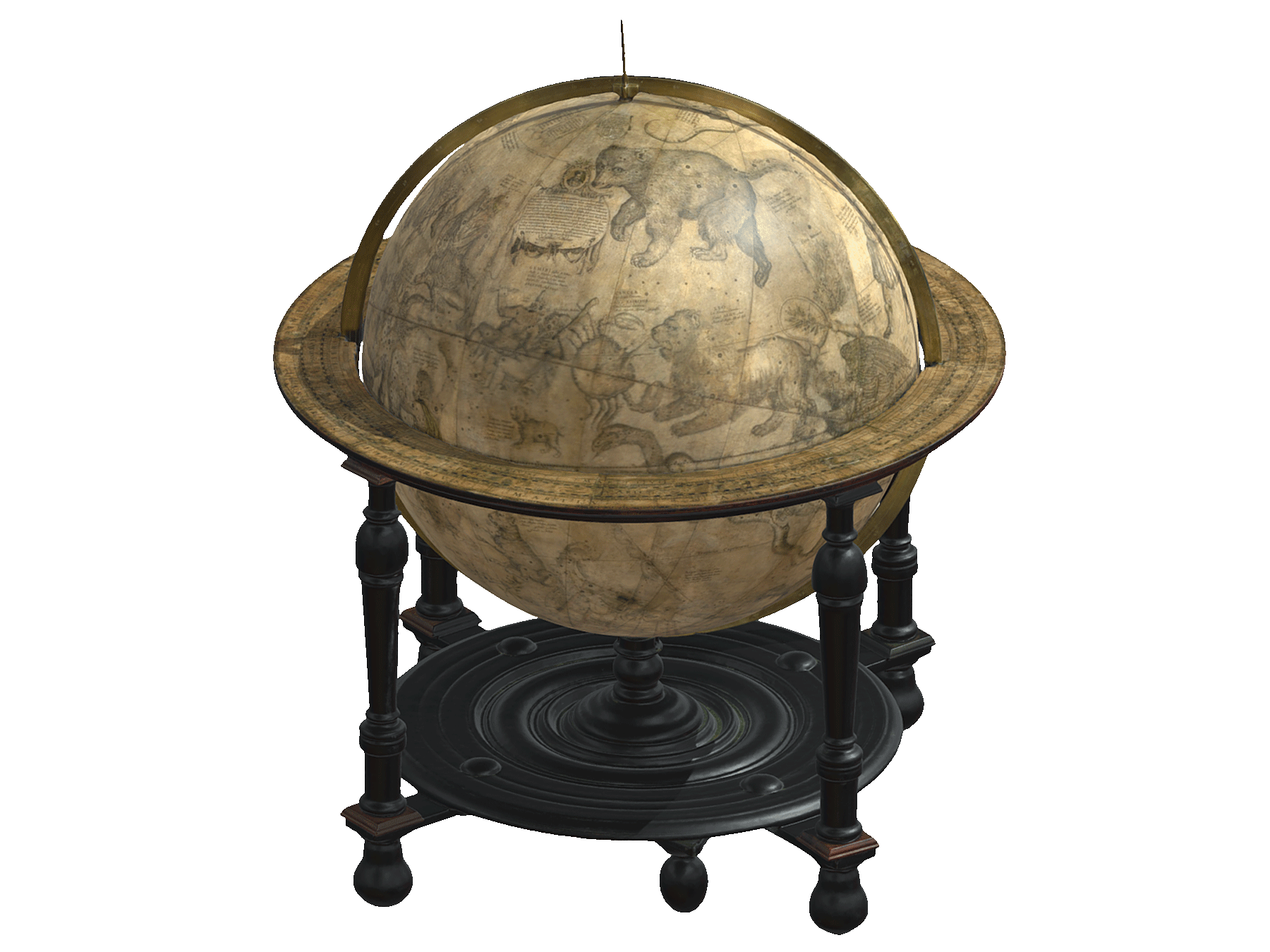The Conversion of Saint Norbert
This scene depicts the conversion of Norbert on the road to Vreden, where a horse, frightened by a lightning strike, threw him to the ground. In the center of the relief, a saddled horse is shown falling headfirst from the right side. The young rider falling from it, depicted head-down from the front, has his arms hanging limply. His feathered cap has fallen off. He is dressed in a long coat with a sword at his side, trunk hose, and knee-high boots with spurs.
Above him, on the left side, in front of the trunk of a large leafy tree, stands a traveling companion. Visible to the knees, facing the viewer, he turns his head to the left, pointing with his outstretched left hand to a nearby town. He is dressed in a wide coat fastened with a belt and a feathered hat.
The town is visible in the background on the right side, above a massive oak tree. Its panorama consists of defensive walls, houses, and a church tower rising above the buildings. The upper part of the composition is filled with swirling clouds.
Baroque Stalls
The Baroque oak stalls from 1662–1665, created by Bavarian artists Franz Motsch and Josef Zeller, come from St. Vincent’s Church in Wrocław, belonging to the Norbertine monastery. In their backs, bas-reliefs depict scenes from the life of Saint Norbert of Xanten (1082–1134), the founder of the order in Prémontré near Laon, France.
The cycle of these depictions begins on the southeast side and features the coat of arms of Abbot Matthäus Paul, who brought the aforementioned artists to Wrocław. Between the reliefs are figures of the Apostles, Evangelists, and Church Fathers, topped with sculptures of Angels with the instruments of the Passion of Christ.
Photographs
3D models
)
)
)
)
)
)
)
)
)